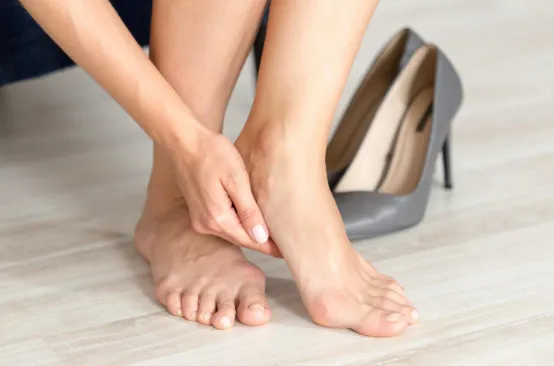While many often focus on the back or neck when thinking about posture, our feet play a key role that is frequently overlooked. Understanding how your feet affect your posture and movement is the first step toward addressing potential issues and improving your overall physical well-being. A podiatrist can be a key partner in this process.
What is a Podiatrist?
Your feet are the foundation of your body, and if they’re misaligned, everything above them, such as ankles, knees, hips, and spine, can be affected. Proper foot alignment helps even weight distribution and reduces strain on your body. A podiatrist can help identify and address alignment issues, keeping your foundation strong and your body moving correctly.
When issues like flat feet, high arches, or other structural abnormalities occur, this foundation becomes unstable. The body compensates for this instability, which can trigger a chain reaction of misalignment throughout the kinetic chain. This misalignment affects your posture and movement, potentially leading to pain or discomfort. Addressing foot alignment is key to maintaining balance and overall body function.
What are Common Foot Issues?
Several common foot conditions can have a significant effect on your body’s alignment and movement patterns. Recognizing these signs and conditions will help you understand the source of broader postural problems.
- Flat Feet: Flat feet occur when the arches of the feet collapse, causing the entire sole to make contact with the ground. This can lead to overpronation, which places strain on the knees, hips, and lower back, potentially causing discomfort or pain during movement.
- Bunions: Bunions are bony bumps that form on the joint at the base of the big toe. They can result from improper footwear, genetics, or foot stress and may cause pain, swelling, and difficulty finding shoes that are comfortable.
- Plantar Fasciitis: This condition involves inflammation of the plantar fascia, a thick band of tissue along the bottom of the foot. The resulting heel pain can alter your gait, leading to secondary pain in the knees, hips, and back from unnatural joint stress.
Addressing these issues early is a good way to prevent long-term complications and maintain overall mobility. Proper footwear, stretching exercises, and seeking professional advice can make a significant difference in managing and alleviating these conditions.
How Are Feet Connected to Posture?
Foot misalignments can trigger a chain reaction throughout your body. Poor posture that results from foot conditions can lead to muscle imbalances as some muscles become overworked while others weaken. Over time, these imbalances can disrupt posture, strain your body, and increase the risk of injury. By addressing the root cause of your foot alignment, you can work to correct these imbalances, improve posture, and restore natural, efficient movement.
Take Steps Toward Better Alignment
Understanding the link between your feet and overall posture is a good idea for long-term health. If you experience persistent back, hip, or knee pain or notice uneven shoe wear, consult a podiatrist. They are able to assess your foot structure and gait to identify foundational issues contributing to your symptoms. Solutions might include custom orthotics or specific exercises to correct imbalances. By prioritizing foot health, you invest in your entire body’s stability and well-being.
